BMW 2007 Annual Report Download - page 221
Download and view the complete annual report
Please find page 221 of the 2007 BMW annual report below. You can navigate through the pages in the report by either clicking on the pages listed below, or by using the keyword search tool below to find specific information within the annual report.-
 1
1 -
 2
2 -
 3
3 -
 4
4 -
 5
5 -
 6
6 -
 7
7 -
 8
8 -
 9
9 -
 10
10 -
 11
11 -
 12
12 -
 13
13 -
 14
14 -
 15
15 -
 16
16 -
 17
17 -
 18
18 -
 19
19 -
 20
20 -
 21
21 -
 22
22 -
 23
23 -
 24
24 -
 25
25 -
 26
26 -
 27
27 -
 28
28 -
 29
29 -
 30
30 -
 31
31 -
 32
32 -
 33
33 -
 34
34 -
 35
35 -
 36
36 -
 37
37 -
 38
38 -
 39
39 -
 40
40 -
 41
41 -
 42
42 -
 43
43 -
 44
44 -
 45
45 -
 46
46 -
 47
47 -
 48
48 -
 49
49 -
 50
50 -
 51
51 -
 52
52 -
 53
53 -
 54
54 -
 55
55 -
 56
56 -
 57
57 -
 58
58 -
 59
59 -
 60
60 -
 61
61 -
 62
62 -
 63
63 -
 64
64 -
 65
65 -
 66
66 -
 67
67 -
 68
68 -
 69
69 -
 70
70 -
 71
71 -
 72
72 -
 73
73 -
 74
74 -
 75
75 -
 76
76 -
 77
77 -
 78
78 -
 79
79 -
 80
80 -
 81
81 -
 82
82 -
 83
83 -
 84
84 -
 85
85 -
 86
86 -
 87
87 -
 88
88 -
 89
89 -
 90
90 -
 91
91 -
 92
92 -
 93
93 -
 94
94 -
 95
95 -
 96
96 -
 97
97 -
 98
98 -
 99
99 -
 100
100 -
 101
101 -
 102
102 -
 103
103 -
 104
104 -
 105
105 -
 106
106 -
 107
107 -
 108
108 -
 109
109 -
 110
110 -
 111
111 -
 112
112 -
 113
113 -
 114
114 -
 115
115 -
 116
116 -
 117
117 -
 118
118 -
 119
119 -
 120
120 -
 121
121 -
 122
122 -
 123
123 -
 124
124 -
 125
125 -
 126
126 -
 127
127 -
 128
128 -
 129
129 -
 130
130 -
 131
131 -
 132
132 -
 133
133 -
 134
134 -
 135
135 -
 136
136 -
 137
137 -
 138
138 -
 139
139 -
 140
140 -
 141
141 -
 142
142 -
 143
143 -
 144
144 -
 145
145 -
 146
146 -
 147
147 -
 148
148 -
 149
149 -
 150
150 -
 151
151 -
 152
152 -
 153
153 -
 154
154 -
 155
155 -
 156
156 -
 157
157 -
 158
158 -
 159
159 -
 160
160 -
 161
161 -
 162
162 -
 163
163 -
 164
164 -
 165
165 -
 166
166 -
 167
167 -
 168
168 -
 169
169 -
 170
170 -
 171
171 -
 172
172 -
 173
173 -
 174
174 -
 175
175 -
 176
176 -
 177
177 -
 178
178 -
 179
179 -
 180
180 -
 181
181 -
 182
182 -
 183
183 -
 184
184 -
 185
185 -
 186
186 -
 187
187 -
 188
188 -
 189
189 -
 190
190 -
 191
191 -
 192
192 -
 193
193 -
 194
194 -
 195
195 -
 196
196 -
 197
197 -
 198
198 -
 199
199 -
 200
200 -
 201
201 -
 202
202 -
 203
203 -
 204
204 -
 205
205 -
 206
206 -
 207
207 -
 208
208 -
 209
209 -
 210
210 -
 211
211 -
 212
212 -
 213
213 -
 214
214 -
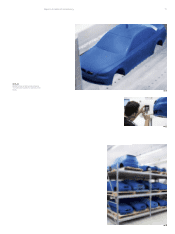 215
215 -
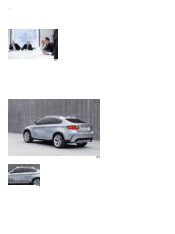 216
216 -
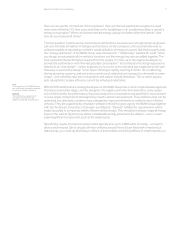 217
217 -
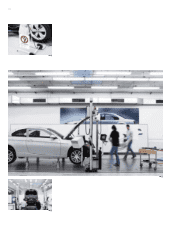 218
218 -
 219
219 -
 220
220 -
 221
221 -
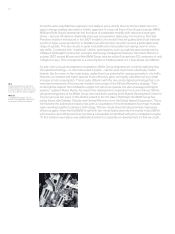 222
222 -
 223
223 -
 224
224 -
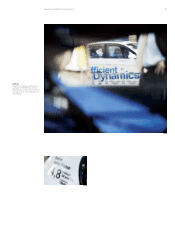 225
225 -
 226
226 -
 227
227 -
 228
228 -
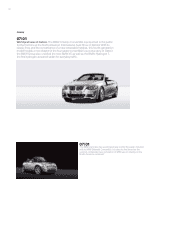 229
229 -
 230
230 -
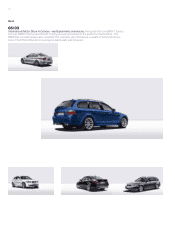 231
231 -
 232
232 -
 233
233 -
 234
234 -
 235
235 -
 236
236 -
 237
237 -
 238
238 -
 239
239 -
 240
240 -
 241
241 -
 242
242 -
 243
243 -
 244
244 -
 245
245 -
 246
246 -
 247
247
 |
 |
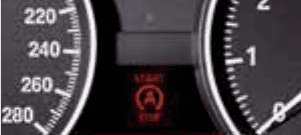
21
== 1 – 2
Setting up the technology to
measure and analyse all energy
flows in the vehicle.
== 3
The Auto Start Stop Function
helps to reduce fuel consumption
substantially by switching off the
engine when standing.
As a core vehicle function, switching the engine on and off must be coordinated with the window
regulator, air conditioning, electronic immobiliser system, and a total of 17 other control units on board.
The engineers had to ensure that the engine does not switch off if it is too cold or too hot outside or
simply because the battery gets too low to easily restart the engine after a stop, for instance. Clustered
around the ASSF is a small orchestra of sensors which synchronise how the system is used.
What at first glance appears to be a simple engine function actually comprises a highly-intelligent sys-
tem which affects the vehicle’s whole organism. Today, this function is considered a particularly effec-
tive energy feature of the EfficientDynamics package, offering customers a major benefit without being
at all conspicuous. In the standardised European Driving Cycle it saves around three percent of fuel.
Developers at the BMW Group are currently pulling out all the stops to implement the system in the
Group’s automatic models as soon as possible – up until now it has only been available for manual
transmissions.
And yet their imagination and their pioneering spirit are still far from being exhausted. Among other things
the EfficientDynamics engineers are researching technologies which will tap into an energy source
that has so far been completely ignored: heat. For technical reasons little more than a third of the fuel in
the engine block is converted into operating power; almost two-thirds are lost in the form of waste
heat in the engine compartment and through the exhaust pipe.
But what if we could harness that energy? automotive engineers wondered. What if we could obtain
energy from the heat? The technology to do this is already doing the rounds of test benches at the
Munich Research Centre. In simple terms, the principle of the steam engine is transferred to the auto-
mobile: liquid is heated in two loops to generate the steam to drive a motor – the so-called turbo
steamer. The energy from the exhaust gas produced can be used on the one hand to support the
drive train; on the other hand there is also sufficient energy in the exhaust gas to easily supply the air
conditioning, vehicle computer and navigation system as well as all the electronic consumer loads on
board.
Report: A matter of consistency.
== 3
